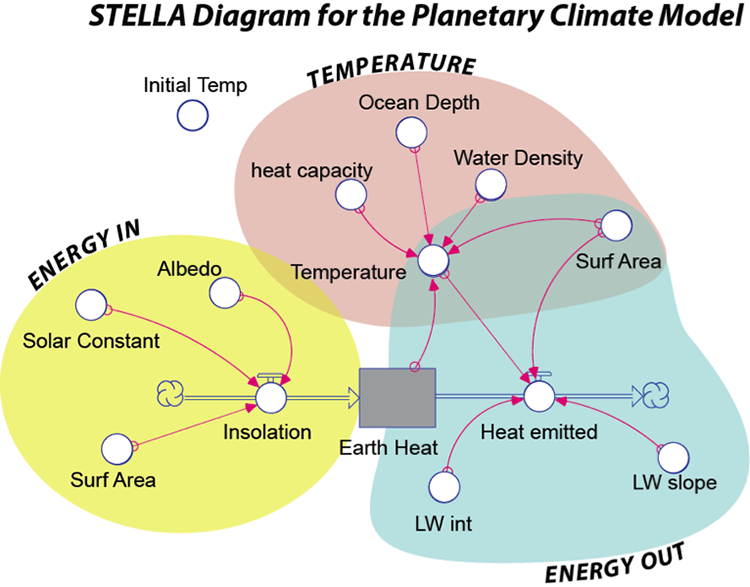The Temperature Sector

The Temperature sector (brown in Fig. 1) of the model establishes the temperature of the Earth’s surface based on the amount of thermal energy stored in the Earth’s surface. In order to figure out the temperature of something given the amount of thermal energy contained in that object, we have to divide that thermal energy by the product of the mass of the object times the heat capacity of the object. Here is how it looks in the form of an equation: (see directions for how view images in a larger format)
Let’s look at it with just the units, to make sure that things cancel out:
This can be simplified by combining, rearranging, and canceling to give:
Here, E is the thermal energy stored in Earth’s surface [Joules], A is the surface area of the Earth [m2], d is the depth of the oceans involved in short-term climate change [m], ρ is the density of seawater [kg/m3] and Cp is the heat capacity of water [Joules/kg°K]. We assume water to be the main material absorbing, storing, and giving off energy in the climate system since most of Earth’s surface is covered by the oceans. The terms in the denominator of the above fraction will all remain constant during the model’s run through time — they are set at the beginning of the model and can be altered from one run to the next. This means that the only reason the temperature changes is because the energy stored changes.
